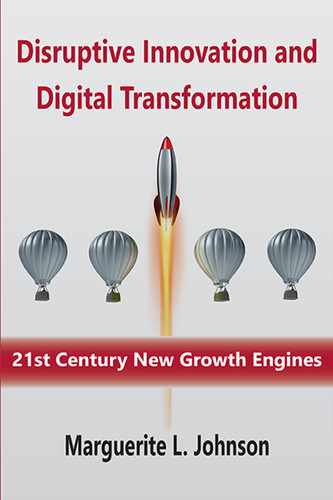Disruptive Innovation and Digital Transformation: 21st Century New Growth Engines is for executive leadership, senior management, innovation catalysts, and digital marketing teams tasked with transforming businesses by accelerating growth through disruptive innovations and digital capabilities. It is a practical guide with concise insights for understanding the applications of disruptive innovation and how to iteratively apply them to projects and opportunities. It garners insights from the best minds across relevant disciplines— from its original theory and latest updates—to arrive at new insights on digital transformation. The author evolves key approaches to disruptive innovation theory to reveal new digital applications and tells leaders what to look for– major categories of customers’ expectations in an escalating pattern to understand in what context digital plus disruptive innovations must be aligned with consumer preferences, environments, and the jobs-to-be-done, which is modeled in a new theory, Disruptive Innovation Customers’ Expectations (DICE). DICE provides methods to use to lead digital disruption across products, services, and business models. DICE translates the vague parts of disruptive innovation by simplifying them down to what-to-do. DICE takes away the elusive nature of disruptive innovation by advising leaders: how to scan, to track, and to detect disruptions. This book provides leaders with the right lenses to fillter markets, giving order to complexity, and making disruptive innovation simpler.
